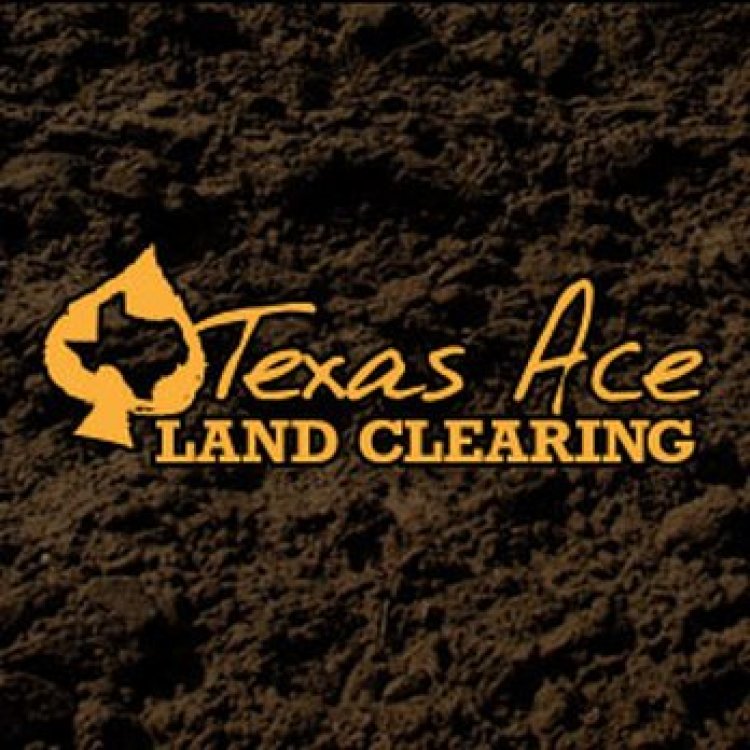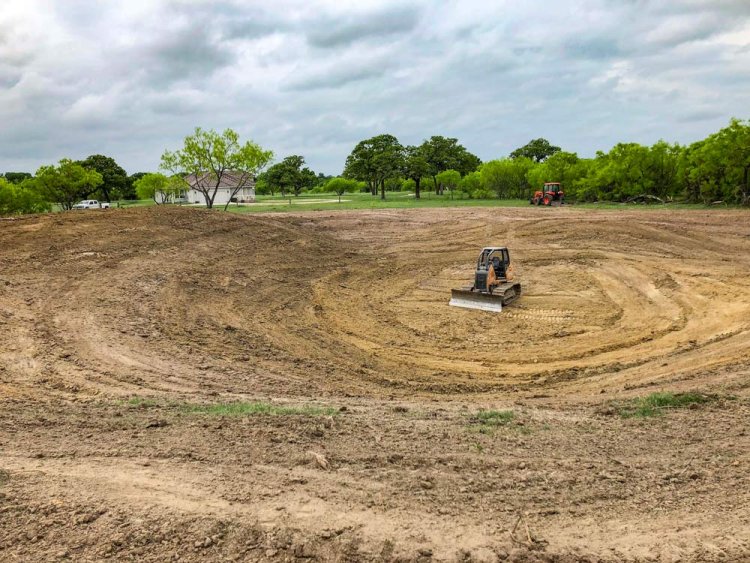Underbrushing vs. Clearing: Understanding the Difference
Share this Post to earn Money ( Upto ₹100 per 1000 Views )


When it comes to land management, especially in places like Houston where vegetation grows quickly and densely, landowners often face choices about how best to maintain their properties. Two common terms, “underbrushing” and “clearing,” represent distinct approaches to managing vegetation, each with its own purpose and benefits. Understanding the difference between underbrush clearing and full clearing can help property owners make informed decisions about what services they need. This article will explore the key differences, advantages, and applications of underbrushing versus full clearing, and explain why hiring a professional underbrush clearing company is beneficial.
What Is Underbrushing?
Defining Underbrushing
Underbrushing, sometimes referred to as selective clearing or brush thinning, is the process of removing small trees, shrubs, and undergrowth from a landscape while leaving larger trees and other desirable vegetation intact. This process focuses on managing the dense, low-lying vegetation that can accumulate on a property over time, allowing the land to be more usable and safer without entirely altering the landscape.
Underbrushing is particularly popular in areas where property owners wish to retain the natural aesthetic of their land while keeping it safe and accessible. It’s a controlled, minimally invasive approach that opens up space and reduces fire hazards while preserving desirable trees and other established plants.
Benefits of Underbrushing
1. **Improved Accessibility**: Underbrushing makes properties easier to navigate by clearing pathways and reducing thick vegetation that obstructs movement. This is ideal for landowners who wish to use their property for recreation, hiking, or access to utility areas.
2. **Enhanced Aesthetics**: Selective underbrush clearing creates a more organized and aesthetically pleasing landscape. By removing overgrown shrubs and brush, the property’s natural beauty can shine through, giving it a park-like appearance.
3. **Reduced Fire Hazards**: Dense underbrush is highly flammable, especially in dry conditions. Removing this buildup reduces the risk of fires, which is particularly beneficial in regions prone to wildfires.
4. **Improved Air and Soil Quality**: By reducing dense undergrowth, underbrushing encourages air circulation and sunlight penetration to the forest floor, which can improve soil health and benefit the remaining vegetation.
When to Choose Underbrushing Services
Underbrushing services are ideal for properties where the primary goal is to improve appearance, safety, or access without altering the overall layout. For properties with large trees that the owner wants to retain, underbrushing offers a way to manage vegetation without sacrificing the property’s natural character. It’s commonly used for residential areas, nature trails, parks, and other areas where selective clearing is preferred over complete removal.
What Is Clearing?
Defining Full Clearing
Full clearing, as the name suggests, is a more extensive process that removes most vegetation from an area, including trees, stumps, and undergrowth. This approach is generally used to prepare a site for new development or construction, where the objective is to start with a completely clear plot of land.
Clearing is ideal for construction projects or when a landowner needs to create open space for farming, livestock grazing, or large recreational areas. It’s a transformative process that drastically changes the landscape, turning densely wooded or brush-filled areas into open land.
Benefits of Full Clearing
1. **Optimal Land Preparation for Construction**: Full clearing prepares land for construction projects such as buildings, roads, and parking areas. It provides a completely open space, making it easier to survey, design, and execute development plans.
2. **Agricultural Use**: When land is cleared entirely, it becomes suitable for planting crops or grazing livestock. Full clearing allows landowners to use their property for farming, ranching, or other agricultural activities.
3. **Effective Pest and Invasive Plant Control**: Clearing removes all vegetation, which can be an effective way to manage invasive plants and pests that thrive in dense brush.
4. **Maximizing Usable Space**: By removing all trees, stumps, and vegetation, clearing allows property owners to maximize the usable space on their land. This is ideal for properties that require significant, open areas for specific purposes.
When to Choose Full Clearing Services
Full clearing is best suited for projects where a completely open space is necessary. For example, property owners preparing to build a home, road, or barn will likely need full clearing to establish a clean foundation. Additionally, if a landowner is looking to convert wooded areas into agricultural land, clearing is the most efficient choice.
Key Differences Between Underbrushing and Clearing
Scope of Work
The most notable difference between underbrushing and clearing is the scope of work involved. Underbrushing targets low-level vegetation and smaller plants, leaving larger trees and much of the natural landscape intact. In contrast, full clearing involves removing all vegetation, creating an entirely open space.
Environmental Impact
Underbrushing has a minimal environmental impact compared to full clearing. By preserving larger trees and established vegetation, underbrushing supports biodiversity and maintains the natural ecosystem. Clearing, on the other hand, removes all plant life from an area, which can significantly alter the landscape and its ecological balance. For landowners who prioritize sustainability and ecological preservation, underbrushing services from a reputable underbrush clearing company may be the preferred option.
Cost Considerations
Underbrushing is generally less expensive than full clearing because it involves less work, equipment, and manpower. Full clearing is a more labor-intensive process that requires heavy machinery to remove trees, stumps, and roots. However, the cost depends on the land size, density of vegetation, and specific requirements for the project.
Long-Term Maintenance
Underbrushing typically requires ongoing maintenance, as smaller plants and brush will regrow over time. To maintain a clean and accessible landscape, property owners may need underbrushing services periodically. In contrast, full clearing provides a long-term solution, though periodic maintenance may still be necessary depending on land use and vegetation growth patterns.
Choosing Between Underbrushing and Clearing: What’s Right for Your Property?
Assessing Your Property’s Needs
Choosing between underbrushing and full clearing depends on the property’s intended use and the owner’s goals. If the goal is to create open, usable land for construction or agriculture, full clearing is often necessary. However, for property owners who want to enhance the landscape’s appearance, improve safety, or create accessible trails, underbrushing is usually sufficient.
Consulting with an Underbrush Clearing Company
An experienced underbrush clearing company can provide valuable insights into what type of clearing will best meet your property’s needs. These professionals can assess the property, identify fire hazards, and create a customized plan for vegetation management that balances safety, aesthetics, and environmental impact.
Benefits of Professional Underbrushing Services in Houston
In Houston, where the climate supports rapid vegetation growth, hiring professional underbrushing services can be especially beneficial. Local companies understand the regional vegetation and environmental considerations unique to the Houston area. They also have specialized equipment and trained staff who can clear brush safely and efficiently.
The Role of Land Clearing Equipment in Underbrushing and Clearing
Specialized Tools for Different Needs
Land clearing equipment used in underbrushing and clearing varies based on the project scope. Underbrushing may involve smaller, precision tools like brush cutters and mulchers, allowing for selective clearing. In contrast, full clearing typically requires heavy machinery, such as bulldozers, chainsaws, and stump grinders, which can tackle large trees and dense vegetation more effectively.
Enhancing Safety and Efficiency
Using professional-grade land clearing equipment enhances both safety and efficiency. Professionals with the right tools can complete projects faster and with minimal disruption to surrounding areas. For instance, mulchers used in underbrushing break down cleared brush into mulch, reducing the amount of debris and promoting healthy soil.
Conclusion: Making an Informed Choice for Property Management
Understanding the difference between underbrushing and clearing can help property owners make the best decisions for their land. While underbrushing focuses on selective vegetation removal to improve aesthetics, safety, and accessibility, full clearing offers a blank slate for construction and agricultural projects. Working with a reputable underbrush clearing company ensures that property management is handled professionally, allowing for a safe, efficient, and environmentally conscious approach.
In areas like Houston, where rapid vegetation growth and fire hazards are common, professional underbrushing services play a crucial role in maintaining safe, attractive properties. By choosing the right type of clearing for your property’s needs, you can enhance both its usability and appearance while contributing to long-term land management and fire prevention efforts.















